Did you know some dogs have such sharp noses, that they can sniff out a single drop of blood in a 5-million-drop pool? That’s not just cool—it’s instinct.
Nature didn’t just gift us dogs to cuddle. Some were born to chase, track, flush, and retrieve—no training wheels needed. These breeds come wired for the wild.
In a world full of high-tech gear, these pups are the original GPS. They’ll find your game, your glove, and probably your lost sandwich.
Whether you’re a seasoned hunter or just love the outdoors, pairing up with the right dog can turn any trip into a story worth retelling. Adventure is better with a tail-wagging teammate.
So, if you’re ready to trade your couch buddy for a trailblazer, let’s dive into nine instinctive hunting dog breeds that were built for action—and born for the hunt.
9 Instinctive Hunting Dog Breeds
1. Labrador Retriever
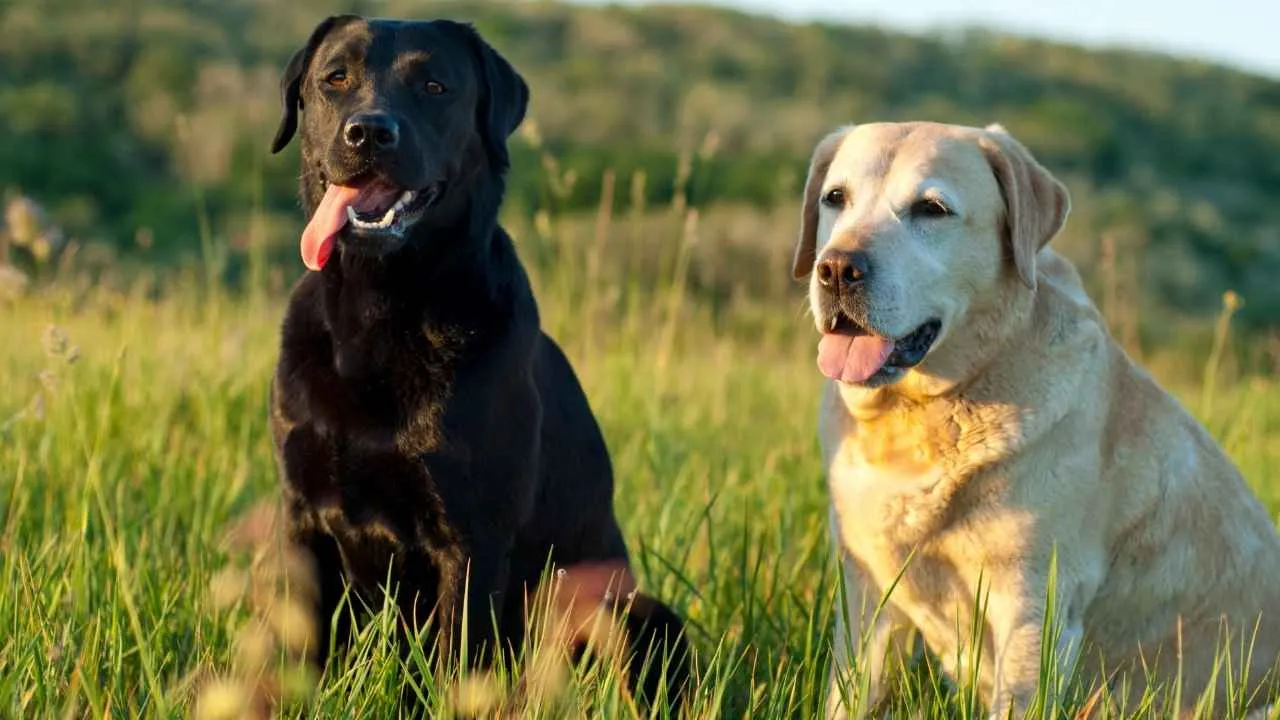
Originally bred in Newfoundland—not Labrador, ironically—this breed quickly rose to fame as one of the most versatile hunting dogs in the world. Recognized by the American Kennel Club (AKC) since 1917, they’re known for their natural retrieving skills, especially in water.
Their dense double coat repels water, and their webbed paws make them elite duck dogs, capable of retrieving downed birds from chilly lakes and marshes. These retriever breeds are strong swimmers and reliable in rough terrain.
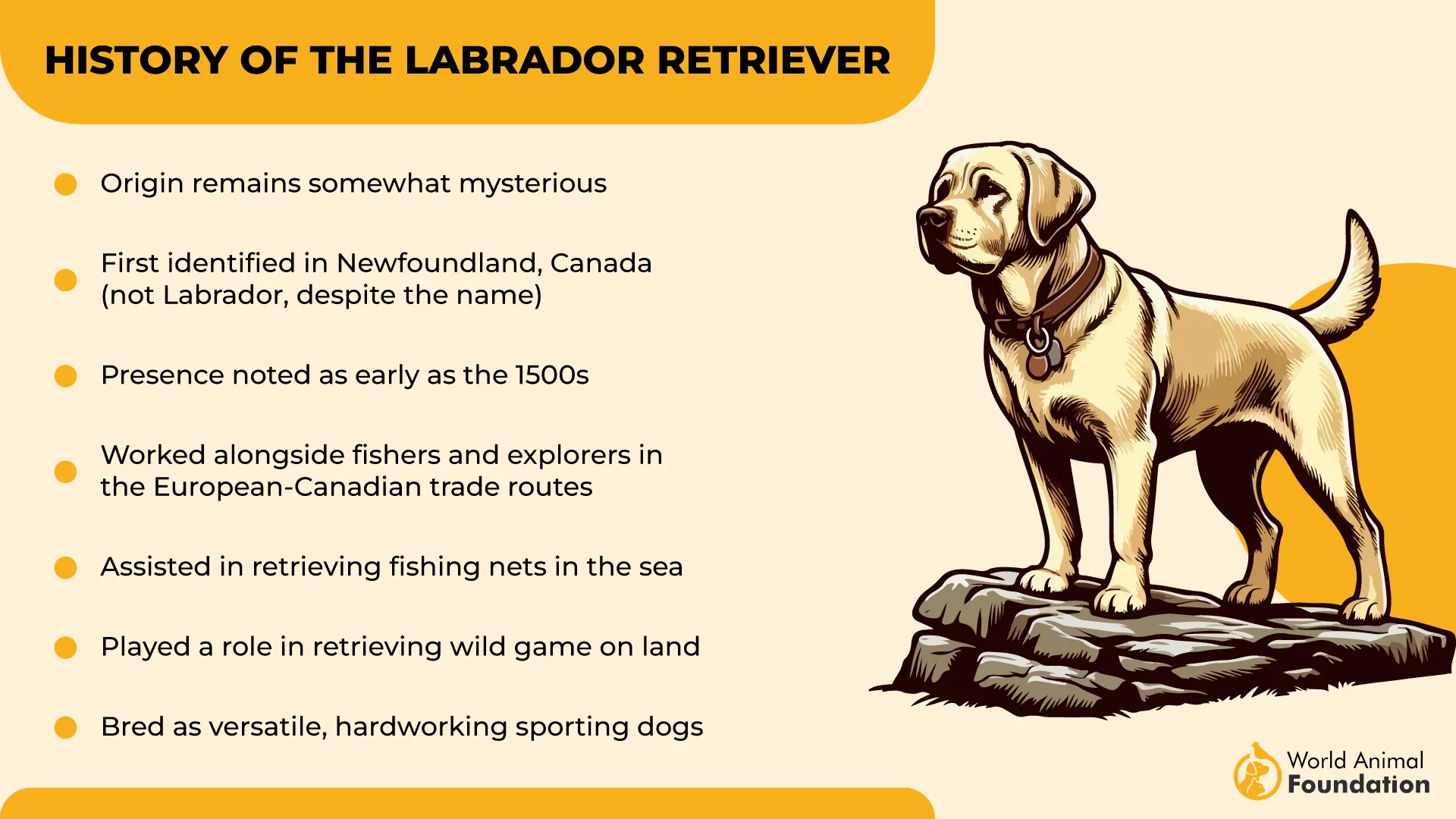
Petplan claims that Labs are eager to please, quick learners, and great with families. Their intelligence and trainability have made them beloved hunting companions and wonderful pets alike.
Expect a high-energy buddy. These active dogs need daily physical exercise and mental stimulation to keep them sharp. Long hikes, fetching games, and field drills are perfect for them.
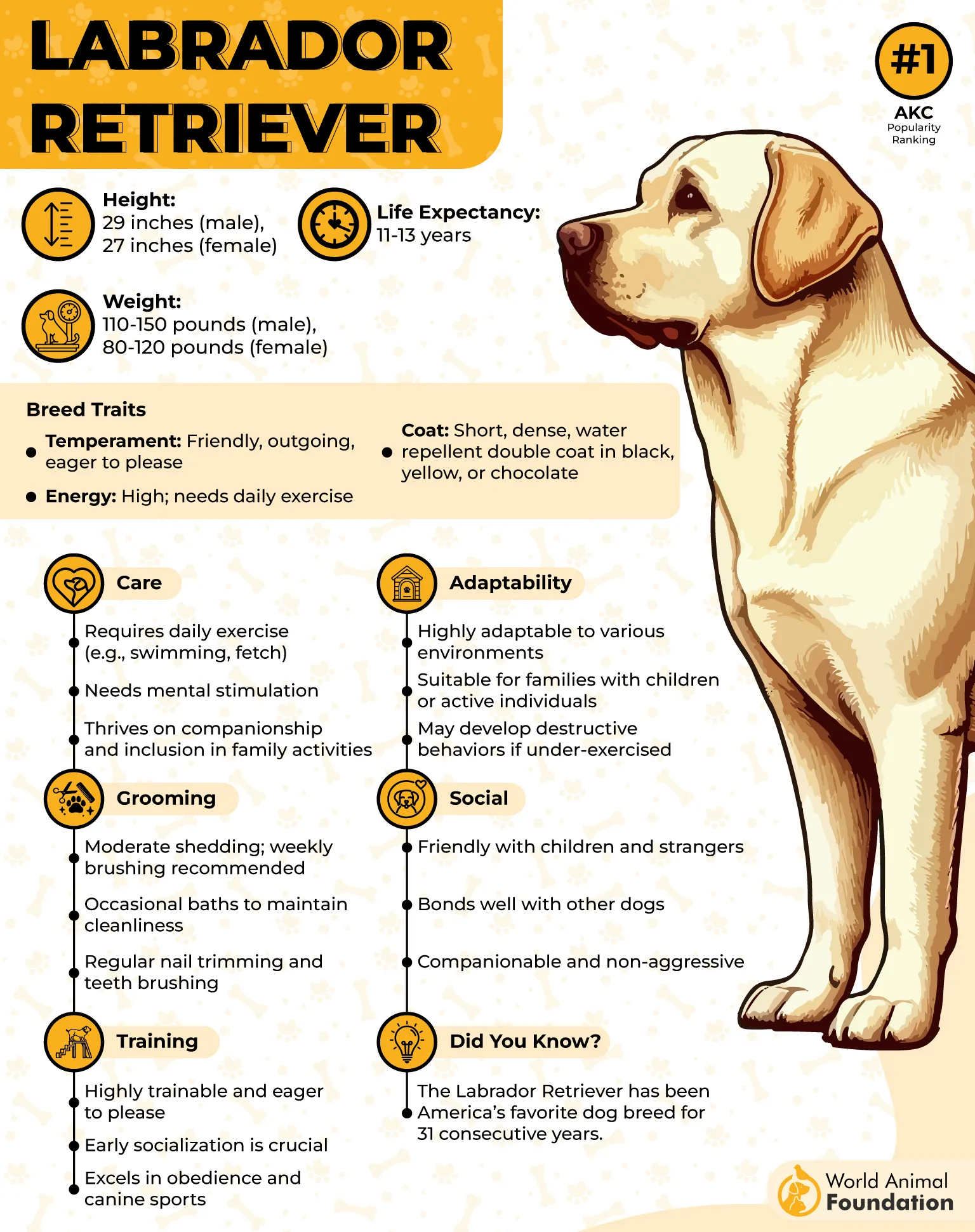
As far as maintenance goes, brushing a few times a week keeps their coat in check. Shedding? Yes—but it’s manageable with regular grooming.
Health-wise, keep an eye on their hips and elbows. Some may also be prone to weight gain, so portion control and a protein-rich diet help maintain their build.
Fun fact: Their “otter tail” isn’t just cute—it acts like a rudder when they’re swimming to retrieve ducks. Labs truly dominate the hunting world with charm and grit.
2. English Setter
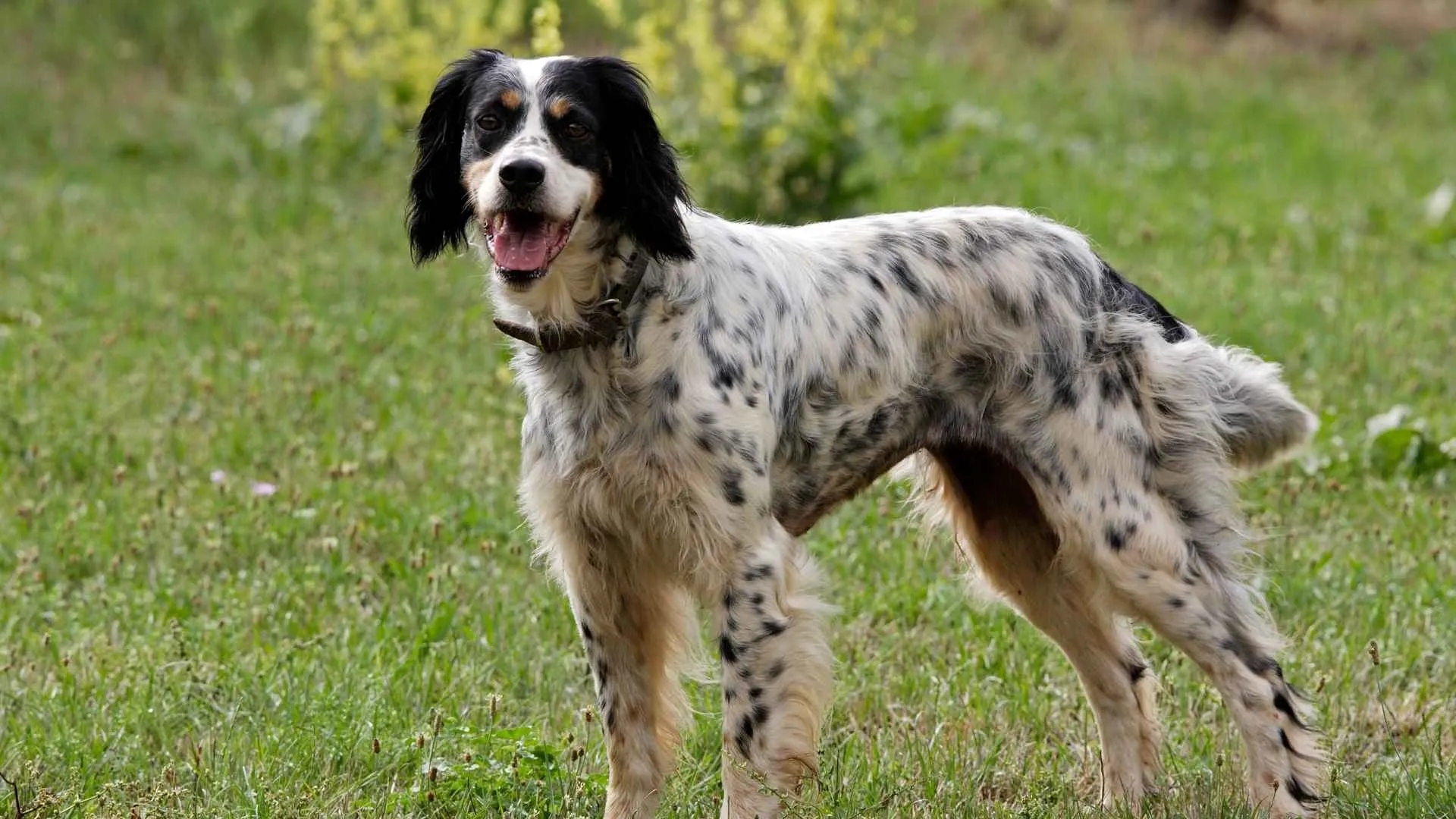
Graceful yet gritty, the English Setter brings elegance to the field and fire to the hunt. Developed in the UK to point upland birds, they’re part of the classic gun dog lineup.
They shine when hunting upland game, using their feather-light steps and keen bird scent detection to locate prey without startling it. Their signature crouch while pointing? That’s a centuries-old instinct in motion.
Their silky, speckled coat—called “belton”—requires weekly brushing to prevent tangles. It’s beautiful but built for dense cover, not just show.
English Setters are affectionate and social, making them excellent family dogs as well as focused bird hunters. They need firm yet gentle training—consistency works wonders with their sensitive nature.
They have moderate dietary needs but benefit from a diet that supports joint health and endurance. These energetic dogs don’t do well on a sedentary schedule.

Give them room to roam, and challenges to conquer, and they’ll reward you with loyalty and precision in the field. Puzzle toys, scent games, and off-leash play are their love language.
Here’s a gem: Some English Setters are so silent on the trail, that hunters claim you’ll spot them before you hear them. Silent but deadly… if you’re a pheasant.
3. Beagle
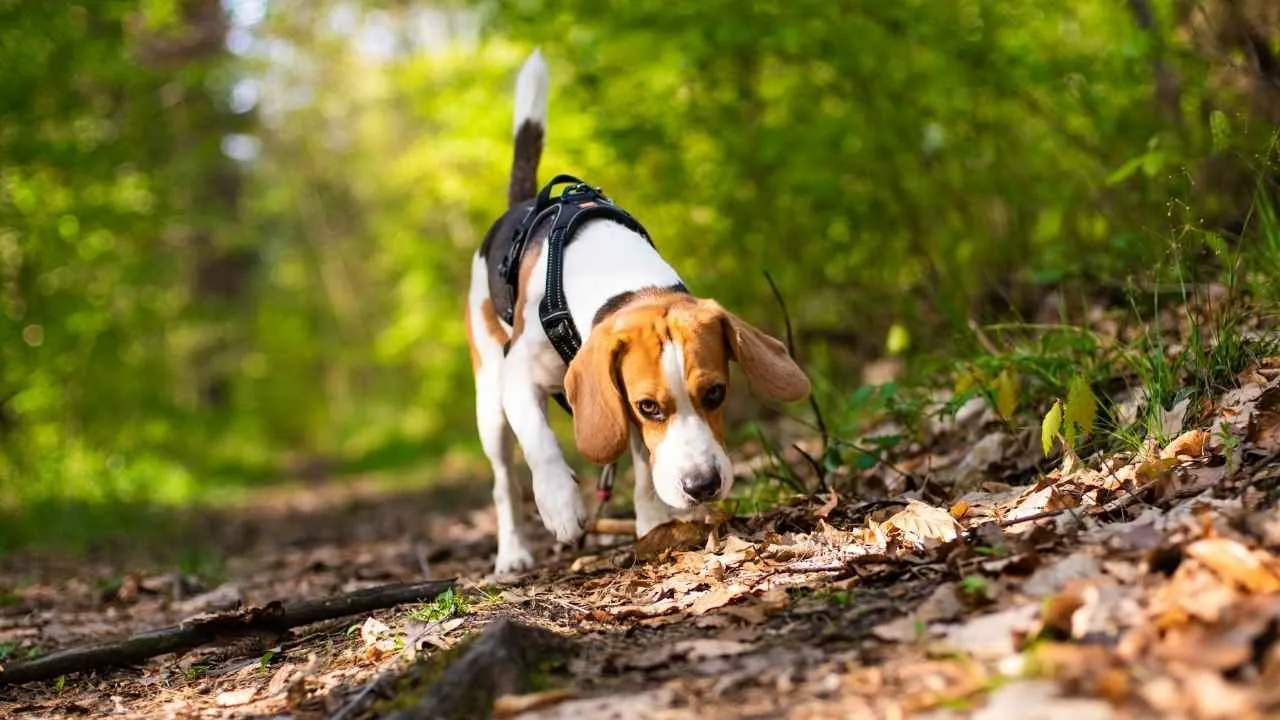
Small but mighty, the Beagle was originally bred in England to hunt small game like rabbits and hares. They’ve got one of the best noses in the dog world, rivaling even the most elite scent hounds.
This compact hound breed follows scent trails with laser focus, often vocalizing in a bay that keeps hunters informed of the chase. They excel at tracking furred game across varied terrain.
PDSA reports that Beagles are easy to groom with their short coat, but their floppy ears need regular cleaning to prevent infection—an overlooked detail in many hunting breeds.
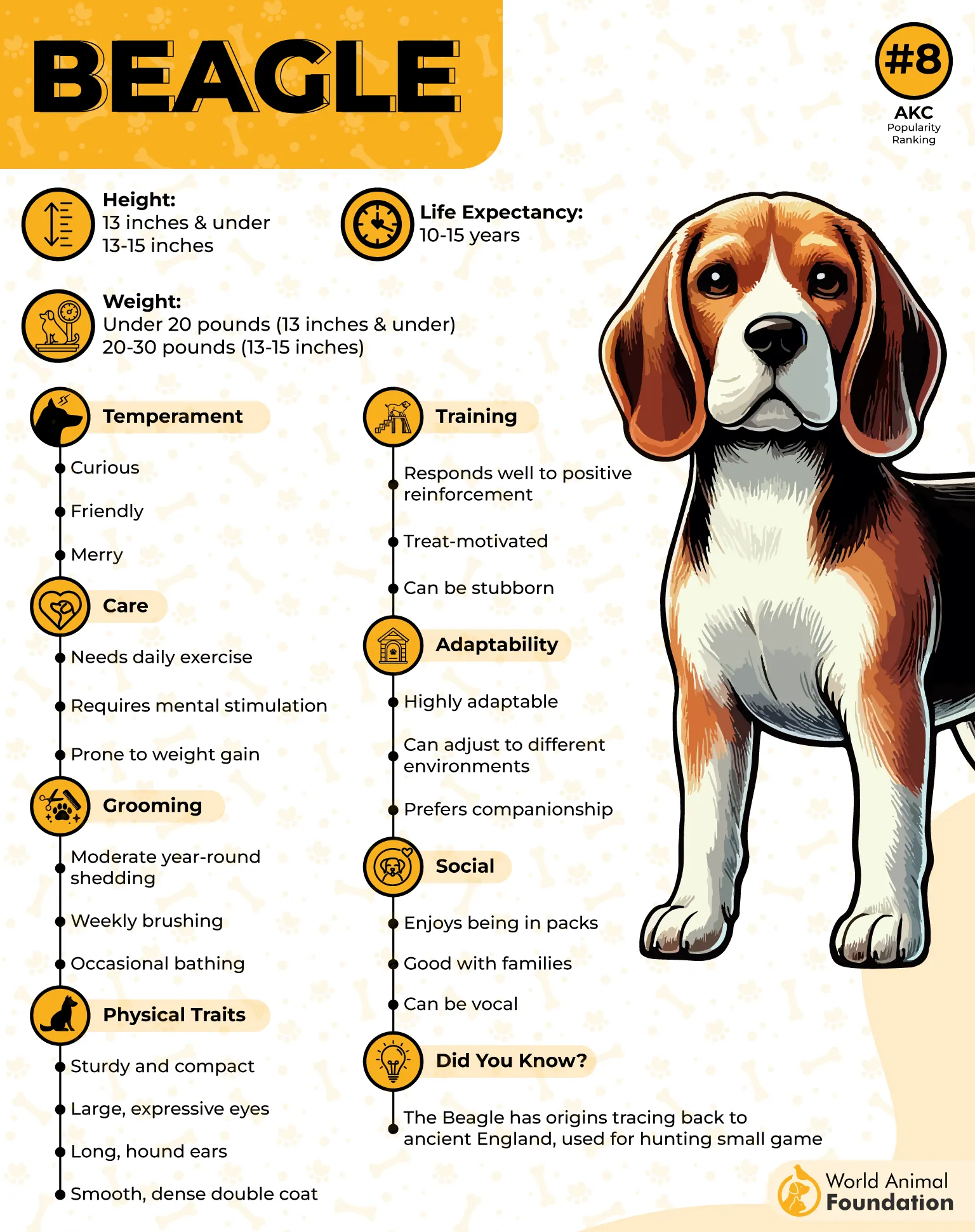
They thrive on routine and reward-based training. While intelligent, their independent streak means you’ll need patience and plenty of treats.
Keep them moving. Beagles love to explore and need daily sniff-filled adventures to stay happy and balanced. Lack of activity can lead to boredom and, well… chewed shoes.
Their diet should be closely monitored—they’re notorious for sneaking snacks. A balanced, portioned diet helps prevent obesity, especially during the off-season.
Fun tidbit: The Beagle’s nose has over 200 million scent receptors—for context, humans have about 5 million. Talk about a loyal hunting companion with super-sniffer skills!
4. Boykin Spaniel
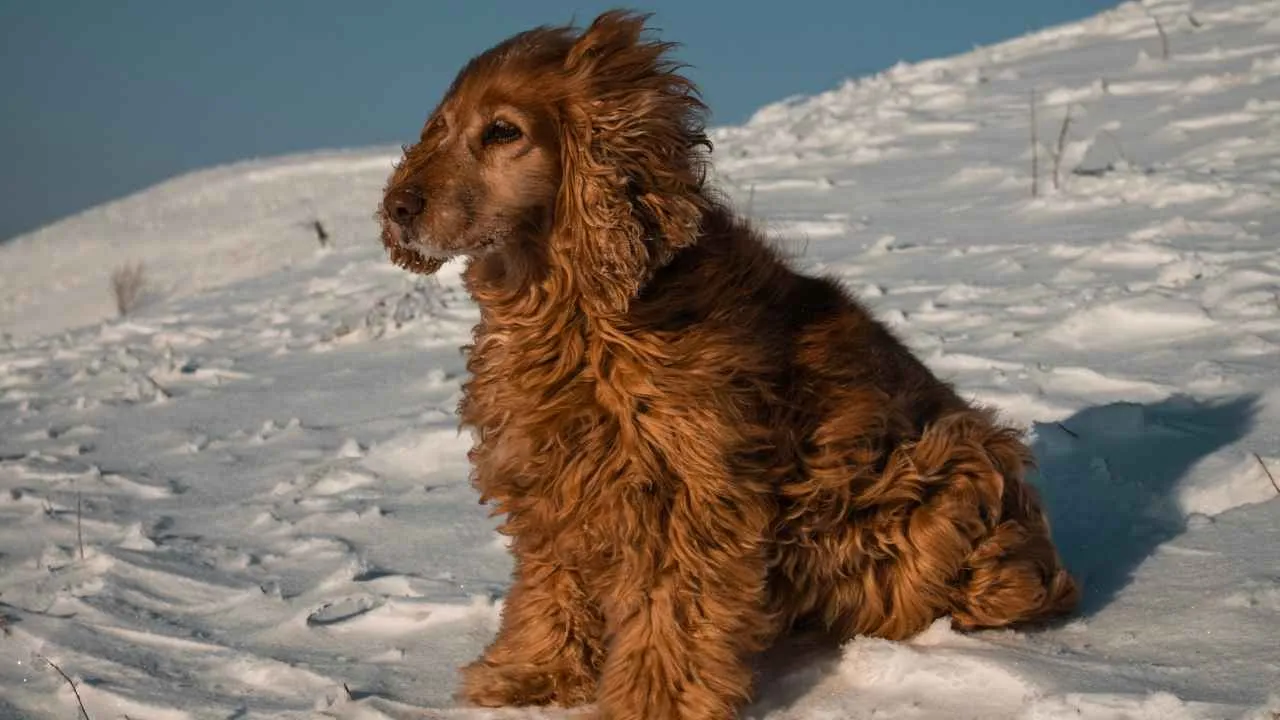
Born and bred in South Carolina, the Boykin Spaniel was developed to flush and retrieve upland birds and a few ducks—all from a small boat. Compact, calm, and efficient, they’re built for versatility in the hunting world.
This curly-coated charmer thrives in dense cover and has a strong prey drive, making them top-tier hunting companions for quail, turkey, and waterfowl alike.
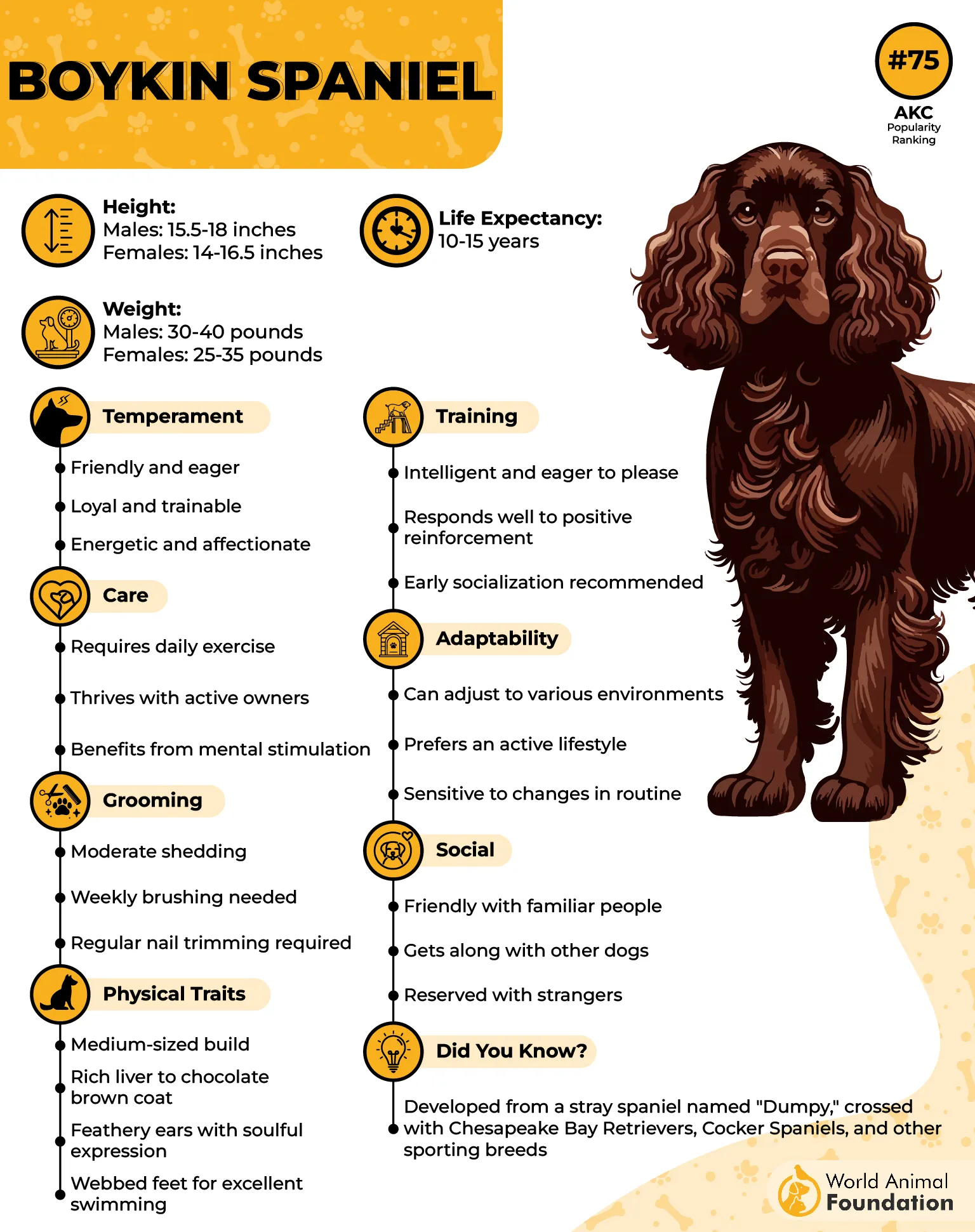
Don’t let their size fool you—they’re agile, determined hunters with hearts twice as big. Their stamina in the field rivals other dogs twice their build.
Coat care is relatively simple: regular brushing and occasional trimming. Their wavy coat repels water but benefits from routine maintenance to avoid matting.
They’re smart, eager, and easy to train—just don’t skimp on praise. Early socialization makes them fantastic family pets and even better bird dogs.
They need daily exercise and problem-solving activities to stay balanced. Think: agility drills, fetch, or scent-based games.
Fun fact: The Boykin Spaniel is the official state dog of South Carolina—and the only breed developed specifically for the state’s swamps and fields.
5. Golden Retriever
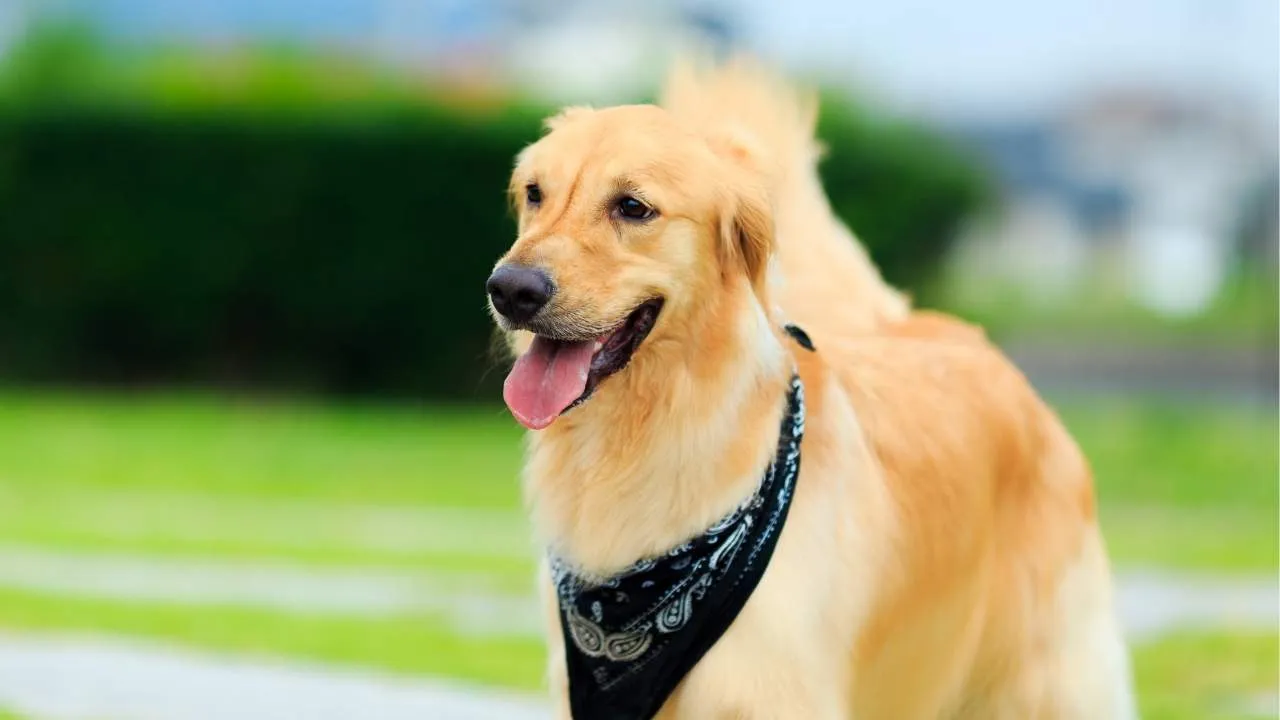
Few retriever breeds blend brains, brawn, and beauty like the Golden Retriever. Originally hailing from Scotland, they were crafted to retrieve ducks and flush birds in rugged terrain.
With their flowing golden coats and friendly demeanor, they’re often seen as loving family pets—but beneath that charm is a tireless, water-loving gun dog.
They excel at retrieving downed birds, especially in water. Their soft mouth ensures the game is delivered undamaged—just as nature intended.
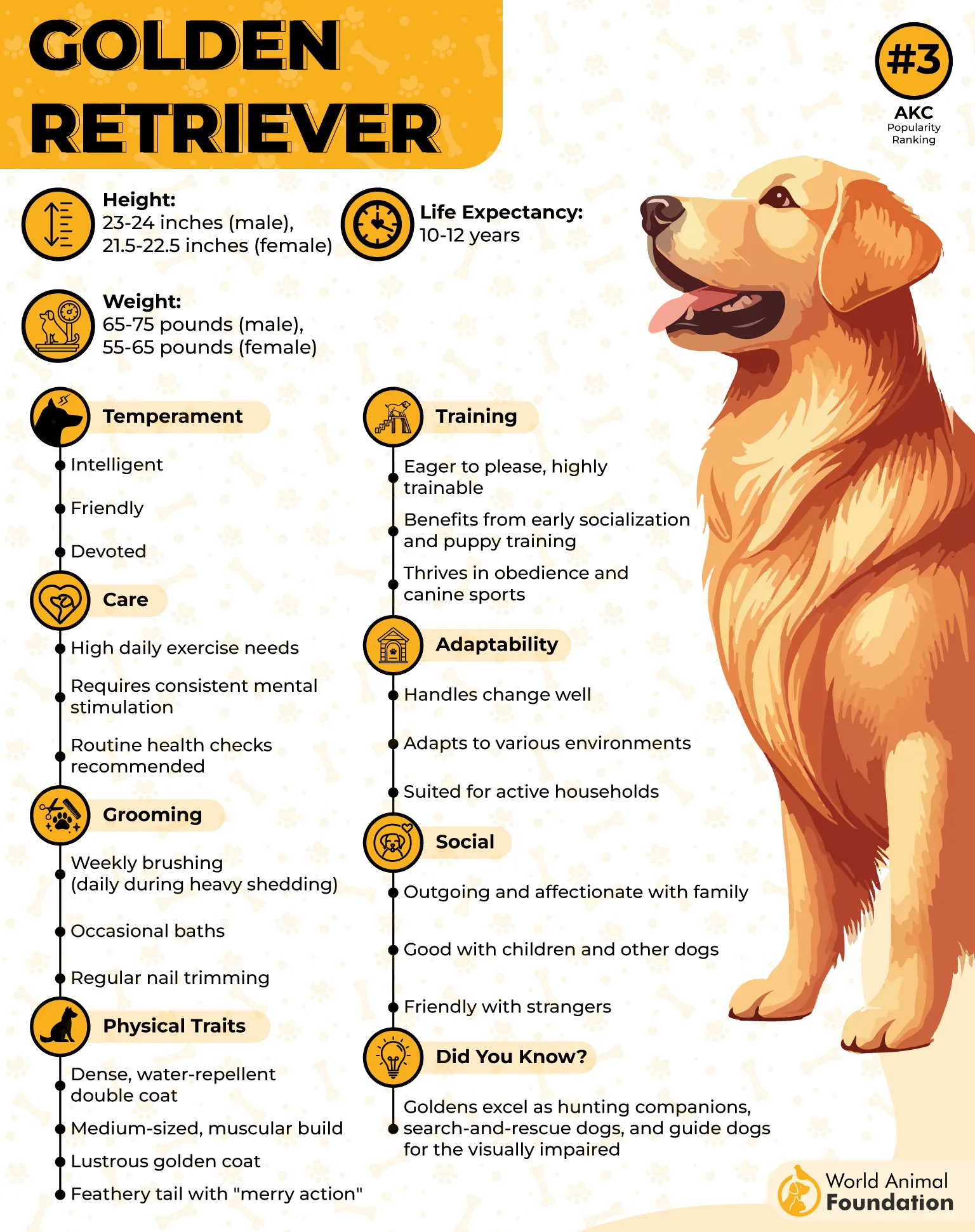
Their thick, water-resistant coats need regular grooming, especially after muddy fieldwork. Brushing a few times a week keeps the fluff in check.
AKC notes that Goldens are famously eager to please, making them fast learners. However, they crave interaction—neglect training or play, and they’ll invent their own fun.
They need daily exercise, both physical and mental. Obedience drills, fetch, and fieldwork are all in a day’s fun.
Trivia time: Golden Retrievers have been champions in everything from upland game hunting to search-and-rescue. They’re not just pretty—they’re powerful.
6. Chesapeake Bay Retriever
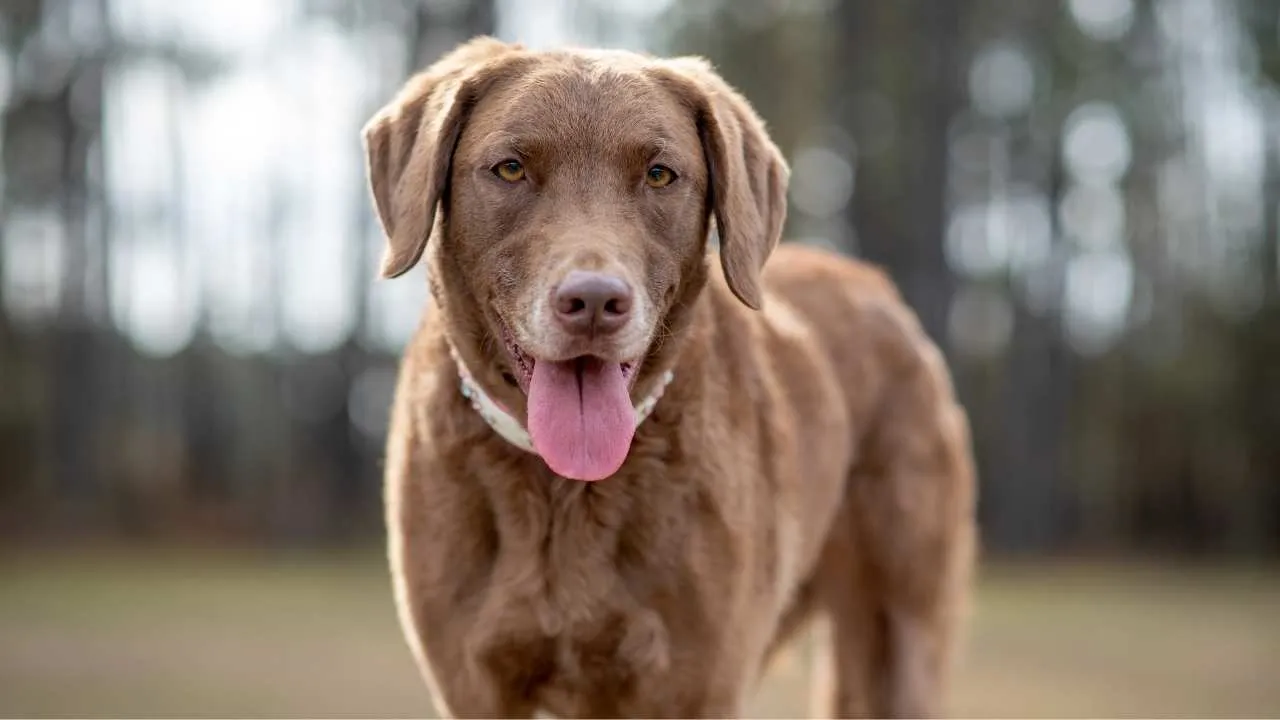
Meet the toughest of the retriever breeds—the Chesapeake Bay Retriever affectionately called the “Chessie.” Developed by duck hunters in the cold, choppy waters of Maryland, they were originally bred for retrieving downed birds in brutal conditions.
These tough dogs have oily, waterproof double coats that shrug off icy water and bitter winds. Think of them as the Navy SEALs of the hunting waterfowl world.
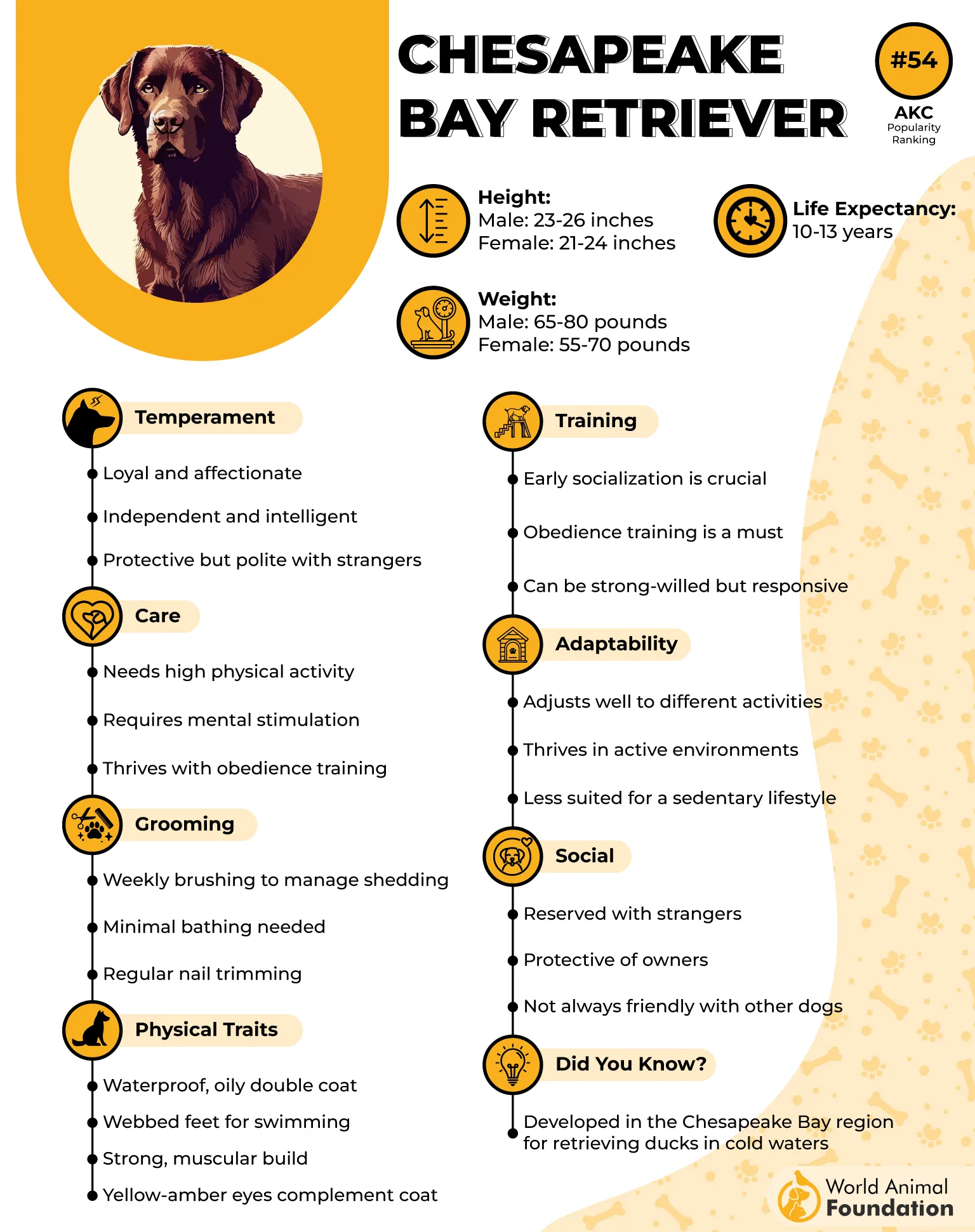
Their signature wavy coat comes in earthy tones like sedge, dead grass, and brown—perfect camouflage for marsh hunts.
Chessies are confident and loyal but also fiercely independent. They thrive with experienced handlers who can balance structure with respect.
Training requires patience and consistency. Once bonded, they become the ultimate loyal hunting companion, unwavering in drive and devotion.
They demand daily exercise and mental challenges. Water retrieves, advanced obedience, and hunting tasks keep them sharp and satisfied.
Fun nugget: Unlike other retriever breeds, Chessies are known to guard their family and territory—making them hunters and protectors.
7. German Shorthaired Pointer
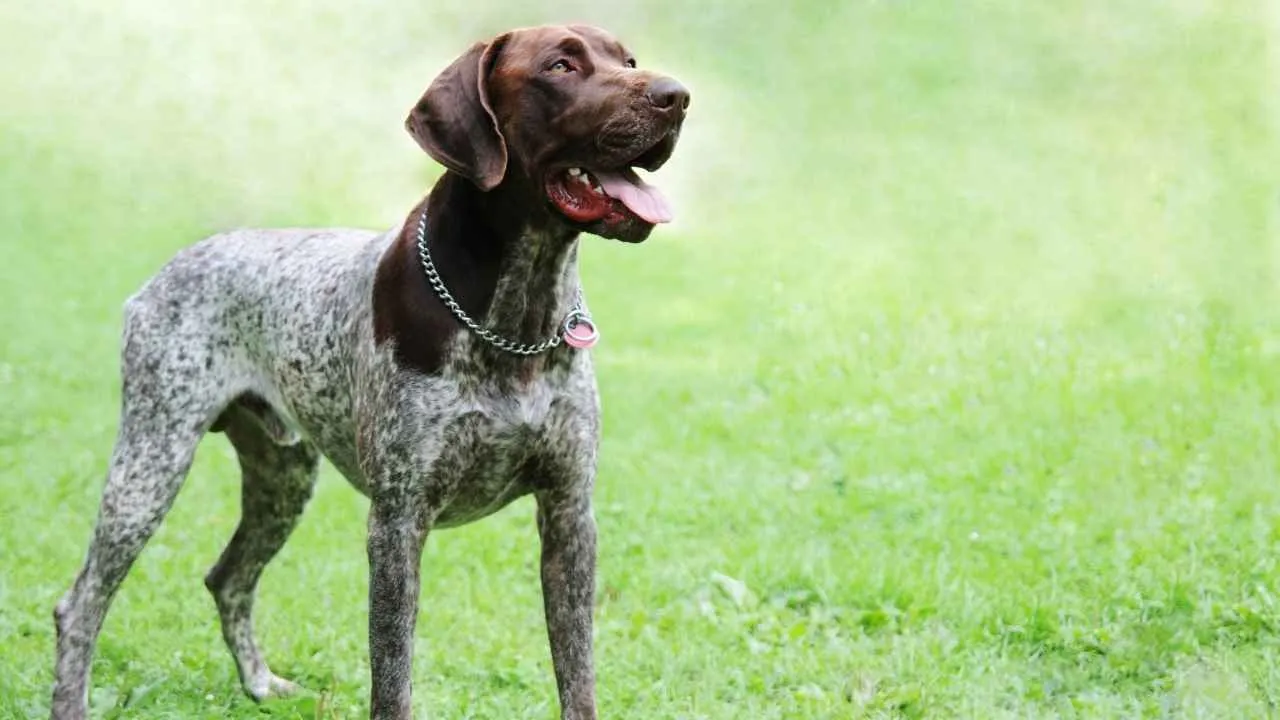
If there were a decathlon in the hunting world, the German Shorthaired Pointer (GSP) would medal every time. Originally bred in Germany to hunt everything from upland birds to small game, they’re elite, all-terrain versatile hunting dogs.
Their sleek, muscular build allows them to sprint across fields, swim through marshes, and scale rough terrain with ease. These dogs don’t walk—they work.
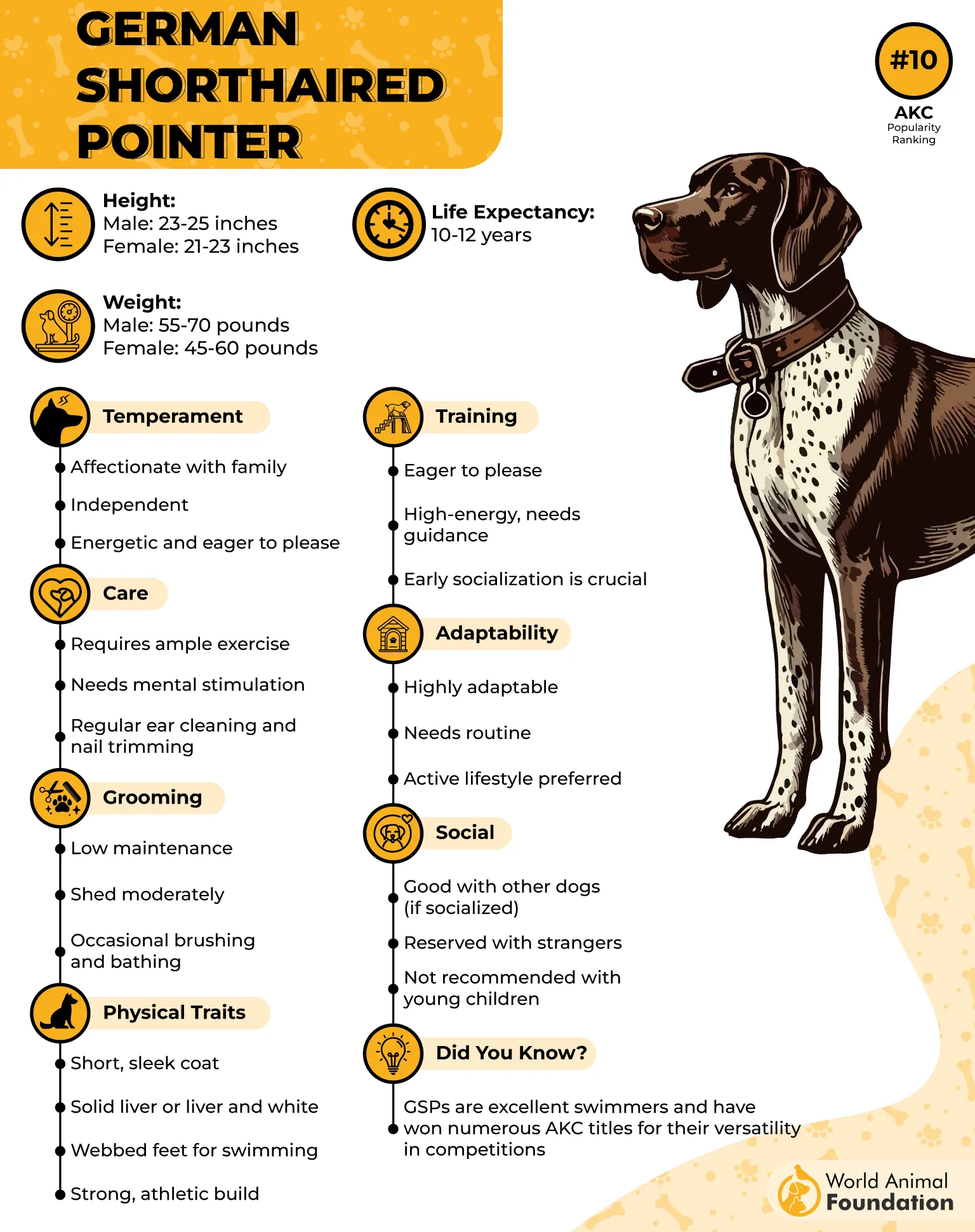
They’re known for their instinctive ability to point upland birds and retrieve them with precision. Few gun dogs match their combination of stamina, style, and smarts.
Grooming is a breeze thanks to their short coat, but they do shed. A quick weekly brush keeps things under control.
Highly trainable, they respond best to positive reinforcement and fast-paced sessions. They’re thinkers—so keep training fresh and fun.
Purina recommends that these energetic dogs need rigorous daily exercise. Without it, they’ll create their jobs (usually involving dirt and chaos).
Bonus trivia: GSPs are one of the few hunting breeds equally skilled on land and water—true dual-sport athletes of the dog world.
8. Plott Hound

The Plott Hound is a legend among hound breeds, with roots tracing back to Germany and deep ties to the hunting world of Appalachia. They’re known for tracking large game like boar and bear—but don’t count them out for hunting small game either.
Bred for bravery and endurance, Plotts are relentlessly tracking furred game across vast, unforgiving landscapes. They thrive in rough terrain where other hounds may falter.
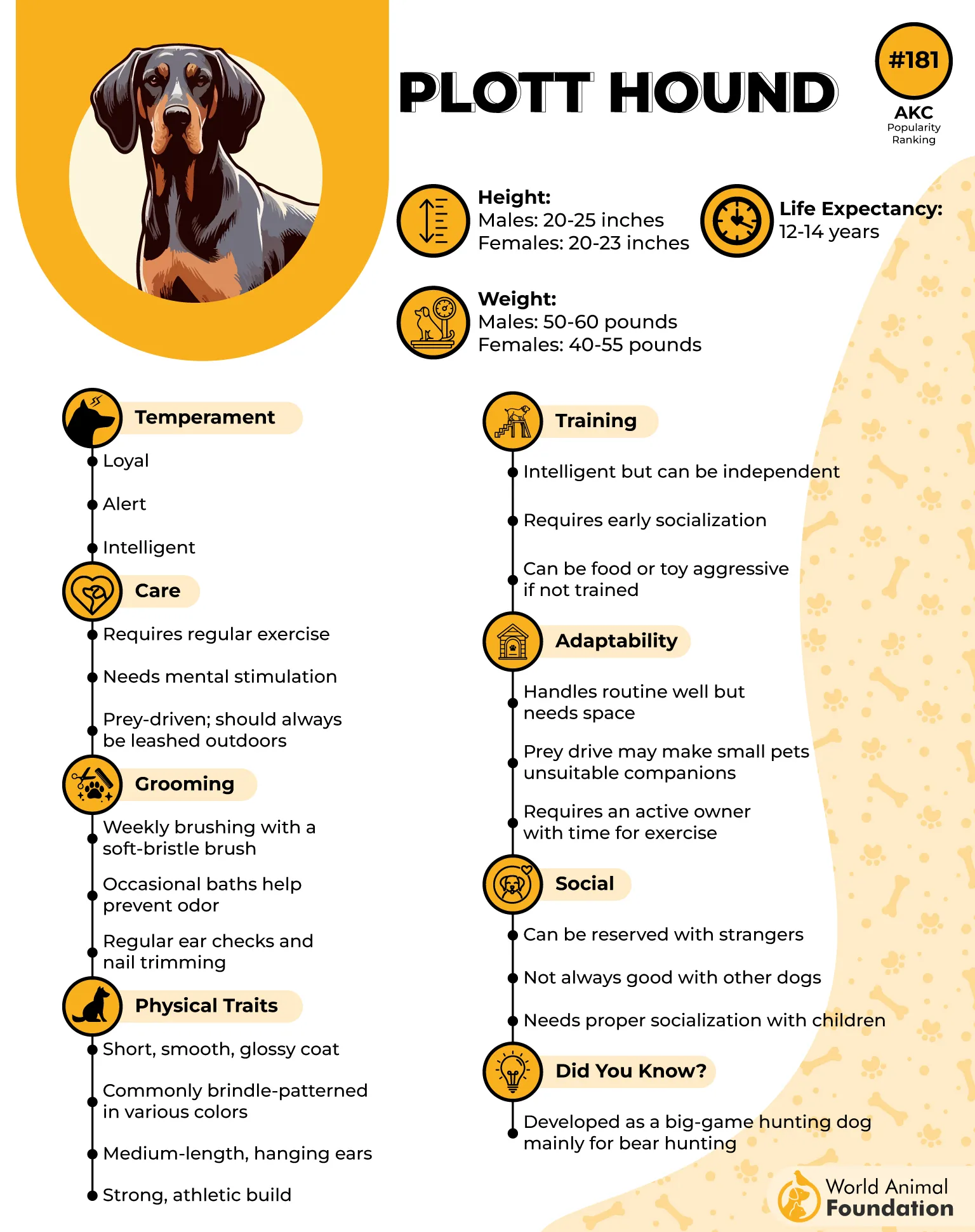
Their short, smooth coat is low-maintenance, coming in striking brindle patterns. Weekly brushing and ear checks are usually all it takes.
Plotts are loyal and fearless, but training can be a challenge. They’re independent thinkers—great for hunting, but they may test your patience.
They need plenty of outdoor time and mentally engaging tasks. Long hikes, scent trails, and game tracking make them feel alive.
Health-wise, they’re a hardy breed with relatively few concerns. Just keep those floppy ears clean to avoid infections.
Fun fact: The Plott Hound is North Carolina’s state dog—a nod to their reputation as determined hunters with unshakable focus.
9. Mountain Cur

The Mountain Cur is the unsung hero of dog hunting. Developed in the American South for frontier survival, they were used to tree raccoons, flush squirrels, and even run-off mountain lions. These dogs mean business.
Fast, fearless, and adaptable, Mountain Curs are born for hunting tasks in dense woods and hill country. They’re specialists at scenting and sighting prey, then pinning it with booming barks.
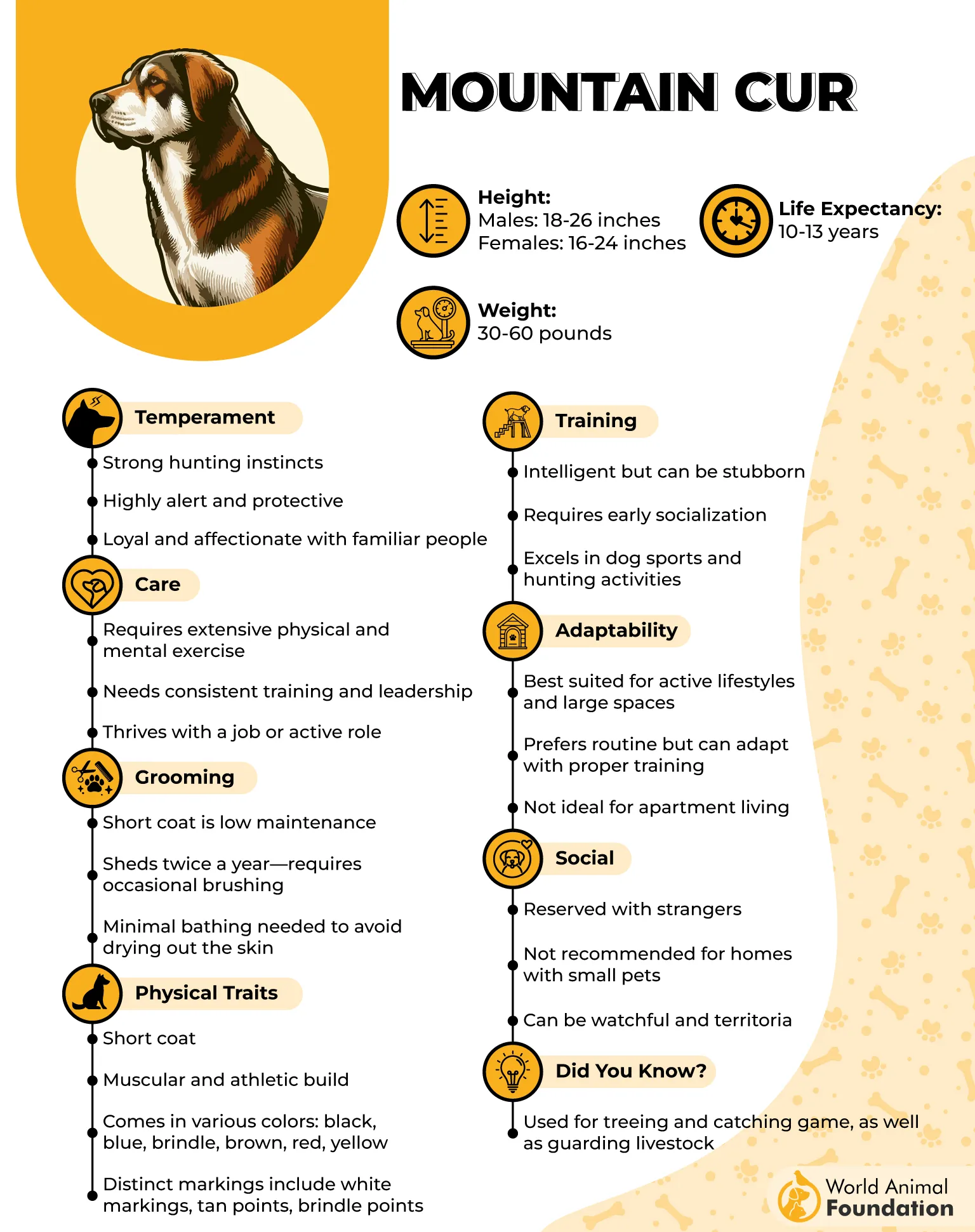
They’ve got short, dense coats that are easy to maintain—perfect for pushing through dense cover without tangling.
Smart and scrappy, they need firm, clear training. They’re highly loyal but not blindly obedient. They want to know why—not just what.
Daily exercise is a must. They crave purpose, so hunting simulations or agility courses are great outlets for their energy.
CKC reveals that they eat like athletes—high-protein diets help them maintain muscle and stamina.
Little-known gem: Unlike other breeds, some Mountain Curs are known to “bark treed” until the hunter arrives—a uniquely American hunting strategy that still works wonders.
Conclusion
Ready to trade your weekend hikes for a wild, tail-wagging hunt? These nine instinctive hunting breeds are proof that great adventure often comes with four legs and a fierce sense of smell.
Whether you’re tracking big game, hunting birds, or just chasing the sunrise, there’s a versatile dog out there ready to match your hunting style stride for stride.
And hey, let’s not forget the honorable mentions—German Wirehaired Pointers, Irish Setters, and English Springers are also incredible hunting partners with serious skills.
Cocker Spaniels and English Springer Spaniels? Masters at flushing upland birds. The Treeing Walker Coonhound and Karelian Bear Dog? Fearless on the trail, whether it’s raccoons or rogue bears.
Even some herding dogs moonlight as trackers—proving that instinct isn’t limited to one category. They’re not just excellent hunting partners, many are also great family pets.
So, which breed has your back on your next big outing? Your perfect companion might just be one wag away. Ready to meet them?


